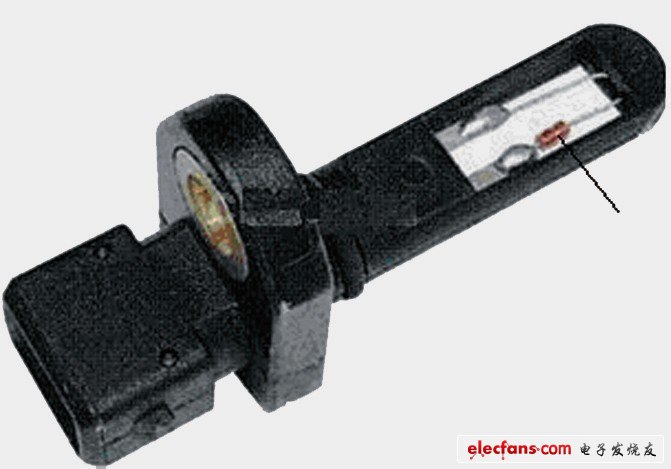Most of the temperature sensors on the car are negative temperature coefficient thermistors, such as the engine intake temperature sensor, coolant temperature sensor, oil temperature sensor, automatic transmission and continuously variable transmission oil temperature sensor, dual clutch transmission is responsible for monitoring the transmission oil bottom The G93 transmission oil temperature sensor for the case oil temperature, the G509 temperature sensor responsible for monitoring the operating oil temperature of the transmission clutch, the indoor temperature sensor for the air conditioner, the ambient temperature sensor, the evaporator temperature sensor, and the suspension air pump temperature sensor are all negative temperature coefficient heat. Varistor. Its characteristic is that the higher the temperature of the measuring point, the lower the resistance value of the sensor and the lower the output voltage signal. Taking Mazda's intake air temperature sensor as an example, when the ambient temperature is -20 ℃, 20 ℃, and 60 ℃, the resistance values ​​are 13.6 ~ 18.4kΩ, 2.21 ~ 2.69kΩ, 0.493 ~ 0.6967kΩ. Common faults of negative temperature coefficient thermistor sensors are abnormal signal, short circuit of sensor or wiring harness, false high temperature signal will appear in the data stream; sensor or wiring harness is broken, water in the terminal or poor contact of ground wire, false low temperature will appear in the data stream signal. In addition, the conversion of the A / D converter of the control unit is incorrect, and a false high-temperature signal may also appear in the data stream. 1. Intake air temperature sensor 1. The role of intake air temperature sensor Except for the Karman scroll air flow sensor, the remaining engines are equipped with intake air temperature sensors, as shown in Figure 1. The intake air temperature sensor can be installed in the air flow sensor or intake pressure sensor, or it can be installed in a certain part on the intake duct. When the engine intake air temperature is high, the control unit will reduce the fuel injection pulse width, and conversely increase the fuel injection pulse width. Figure 1 Intake air temperature sensor 2. Failure analysis of intake air temperature sensor The intake air temperature sensor has poor ground wire contact, and the data stream will show abnormally low temperature, and the low-temperature air density is high, which will increase the fuel injection pulse width and cause the mixture to be too rich. If the sensor is short-circuited, the data stream will show abnormally high temperature, and the high-temperature air density is low, which will reduce the fuel injection pulse width and cause the mixture to be too lean. The higher the intake air temperature sensor temperature is, the richer the mixture will be. The sensor is disconnected or the grounding will be poor. Music System,Stereo System,Surround Speaker,Wall Hanging Speakers The ASI Audio Technology Co., Ltd , https://www.asi-sound.com